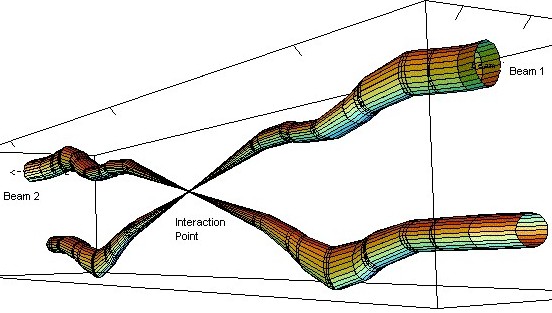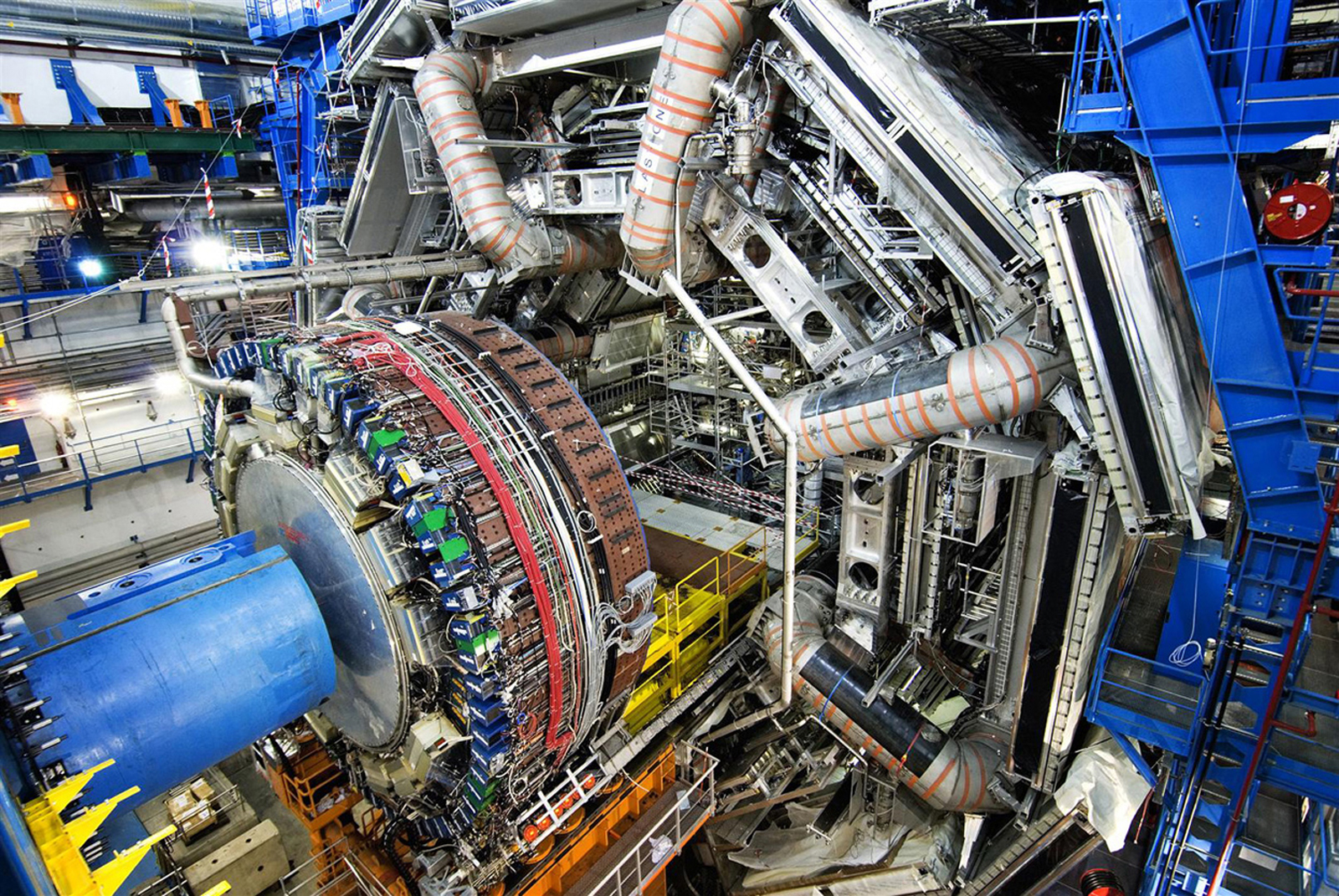Taking a closer look at LHC
(For a more formal discussion go to KINEMATICS Section)
The beam size can be expressed in terms of two quantities, one termed the transverse emittance, ε , and the other, the amplitude function, β.
The transverse emittance is a beam quality concept reflecting the process of bunch preparation (the injector chain), extending all the way back to the source for hadrons. A low emittance particle beam is a beam where the particles are confined to a small distance and have nearly the same momentum. A beam transport system will only allow particles that are close to its design momentum, and of course they have to fit through the beam pipe and magnets that make up the system. In a colliding beam accelerator, keeping the emittance small means that the likelihood of particle interactions will be greater resulting in higher luminosity.
Emittance can be defined as the smallest opening you can squeeze the beam through, and can also be considered as a measurement of the parallelism of a beam.
It has units of length, but is usually referred to as "length x angle", for example, ""um x rad". It can be measured in all three spatial dimensions. The dimension parallel to the motion of the particle is called the longitudinal emittance. The other two dimensions are referred to as the transverse emittances.
The emittance changes as a function of the beam momentum; increasing the energy of the beam reduces the emittance. It is often more useful to consider the normalised emittance, εn, whichexpress the cross-sectional speeds in terms of a small angle regarding the direction of the beam and is proportional to the squared root of the energy (so the physical size of the beam will vary inversely to the square root of the energy).
The amplitude function, β , is determined by the accelerator magnet configuration (basically, the quadrupole magnet arrangement) and powering. When expressed in terms of σ (cross-sectional size of the bunch) and the transverse emittance, the amplitude function β becomes(see here):
β = π·σ2 / ε (1)
So, Beta is roughly the width of the beam squared divided by the emittance. If Beta is low, the beam is narrower, "squeezed". If Beta is high, the beam is wide and straight.
Beta has units of length.
Sometimes Beta is referred as the distance from the focus point that the beam width is twice as wide as the focus point.

In the experiments (detectors), the beam will be "squeezed" as much as possible, to increase the number of collisions, so at a distance of beta before the focus point, the beam is also twice as wide.
Of particular significance is the value of the amplitude function at the interaction point, β*.Clearly one wants to be as small as possible; how small depends on the capability of the hardware to make a near-focus at the interaction point.

Since Luminosity can aproximately be given by:
L ~ f·N2/ (4πσ2)
taking (1) we can express the Luminosity in terms of emittances and amplitude functions as :
L ~ f·N2/ (4 ε·β*)
Thus, to achieve high luminosity, all one has to do is make high population bunches (N) of low emittance to collide at high frequency at locations where the beam optics provides as low values of the amplitude functions as possible.
The nominal LHC peak luminosity L ~ 1034 cm−2 s−1 corresponds to:
β* = 0.55 m and εn = 3,75 μm rad
More information aquí...
|
AUTHORS Xabier Cid Vidal, PhD in experimental Particle Physics for Santiago University (USC). Research Fellow in experimental Particle Physics at CERN from January 2013 to Decembre 2015. He was until 2022 linked to the Department of Particle Physics of the USC as a "Juan de La Cierva", "Ramon y Cajal" fellow (Spanish Postdoctoral Senior Grants), and Associate Professor. Since 2023 is Senior Lecturer in that Department.(ORCID). Ramon Cid Manzano, until his retirement in 2020 was secondary school Physics Teacher at IES de SAR (Santiago - Spain), and part-time Lecturer (Profesor Asociado) in Faculty of Education at the University of Santiago (Spain). He has a Degree in Physics and a Degree in Chemistry, and he is PhD for Santiago University (USC) (ORCID). |
CERN CERN Experimental Physics Department CERN and the Environment |
LHC |
IMPORTANT NOTICE
For the bibliography used when writing this Section please go to the References Section
© Xabier Cid Vidal & Ramon Cid - rcid@lhc-closer.es | SANTIAGO (SPAIN) |



